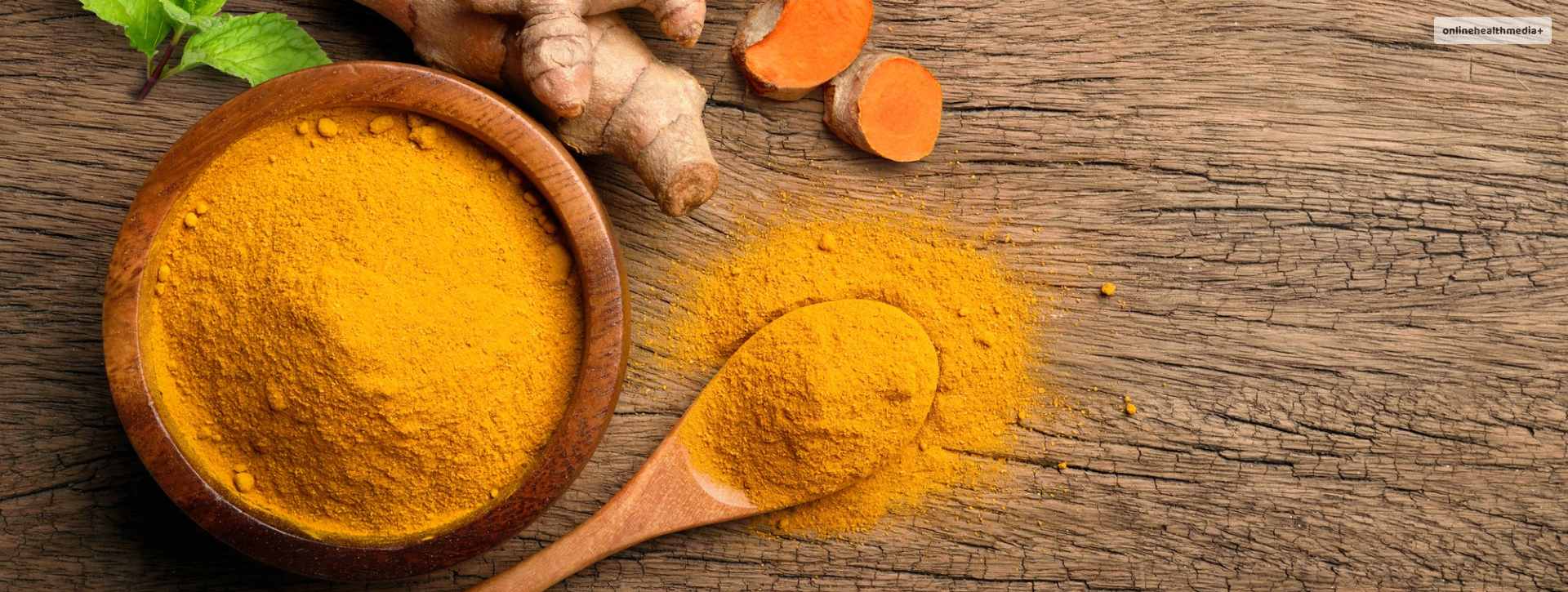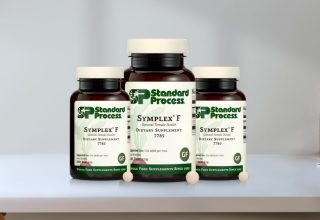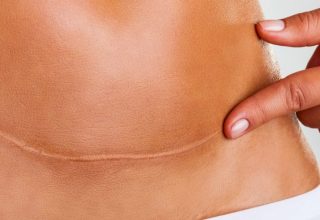20 Benefits Of Turmeric For Men And Women: [Completed Health Guide]
Curcuma longa, or turmeric, is a super plant from the ginger family. This plant has been known to have various health benefits. The plant is found in Southeast Asia, primarily in India- home of Ayurvedic practices. More than 20 benefits of turmeric and ways to include this superfood into one’s diet were illustrated by the early scripts of this country.
These are still followed by people all around the world. Adding turmeric to one’s diet has been proven to affect human health and overall well-being significantly. The main contributor to 20 benefits of turmeric is a chemical substance in this rhizomatous plant known as curcumin, which has several healing properties.
Let’s look at the top 20 benefits of turmeric for both men and women.
What Is Turmeric?
Turmeric is a beneficial spice used widely across South Asia and the neighboring countries for different purposes. The deeply golden-orange colored root is a native to Asia and is attributed to a distinct flavor and color it adds to food.
The use of this spice is also known to be for healing and restorative purposes as well, with its protective characteristics. The ayurvedic use of the spice was shown to be traditional medicine in India as well as China.
Being used in cosmetics and food, including curries across the Middle East, South Asia.Dubbed the “golden spice,” this root is a part of the ginger family. The most active part of the turmeric is the curcumin which is a component present in the rhizome.
Most of the benefits listed below have a relation to this component which shows its diversity in functions.
The spice has a warmth and can have a warming effect for a few people. While some individuals are benefited with this property, some may be wary of the spice.
Science Behind Turmeric:
The extensive ayurvedic use of the spice has pushed scientists to explore its benefit. It has been supported by scientific research that has explored its benefits and properties.
A study in 2021 reported on the enhancement of its bioavailability for people to reap the maximum benefits of this root. With the study reporting on the various pharmacological as well as the biological properties of the root.
Another study found that the most used part of turmeric is its root that houses plenty of vitamins, phytochemicals and minerals which are beneficial for various purposes. The study also noted a few of the benefits described below, providing a scientific backing. The various products extracted from the plant are mainly exported to other countries, mostly in its powdered form. However, a small chunk of the plant is sold in its raw form, putting India in the top spot of exporters.
20 Benefits Of Turmeric: For Both Men And Women
Overall, there are a plethora of benefits offered by this plant, out of which the most common are the anti-oxidative properties, helping with anxiety, metabolic conditions, and inflammation.
Following are the top 20 benefits of turmeric offered by the “Indian saffron.”
1. Anti-inflammatory
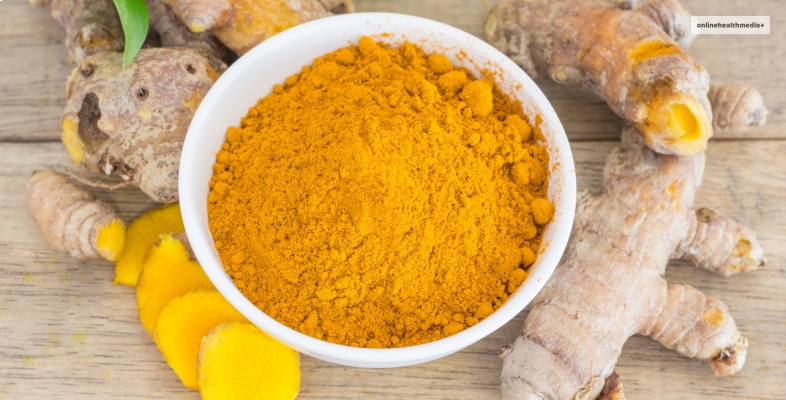
The most important property of this plant is its ability to protect the human body from significant internal damage. This includes an anti-inflammatory effect that reverses the damage induced by various factors (environmental etc.). This is chiefly due to the active ingredient in the plant- curcumin, which has anti-inflammatory properties.
The mechanism of action of this component is known to reduce the levels of enzymes that are significant contributors to inflammation in the human body. The enzymes are lipoxygenase, cyclooxygenase, and nitric oxide synthase. These three enzymes are necessary for the mediation of the inflammatory processes. The active ingredient controls the level of these three enzymes, thus reducing inflammation.
2. Antioxidant
Among the various other properties, the turmeric plant is known to have antioxidant properties as well. Oxidation is a process where free radicals damage the cell membranes and the related structures such as DNA, lipid, and proteins. These free radicals are formed due to the metabolism of oxygen.
The metabolism results in the formation of these unstable molecules that have detrimental effects on the cells and membranes. The free radicals ‘take’ electrons from the other molecules, which damages the cell membrane. Several factors can lead to oxidation in the body- poor diet and excess consumption of alcohol, among other reasons.
The oxidative stress occurs in the body due to the imbalance between the free radical and the antioxidant activity.
The role of turmeric, specifically curcumin, thus, becomes reducing this oxidative stress.
3. Neuroprotector
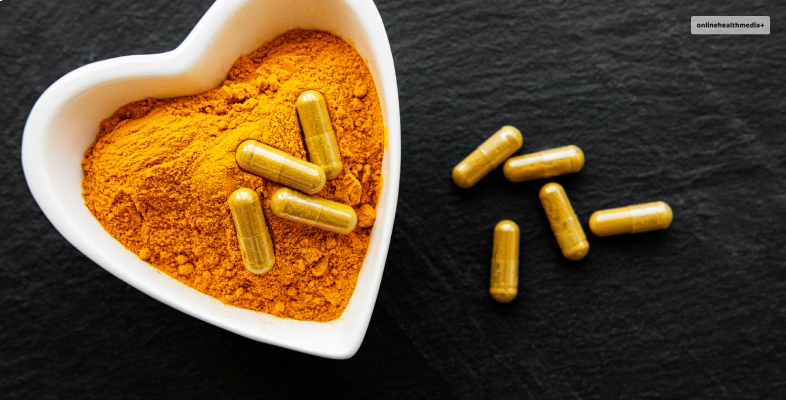
The therapeutic activity of turmeric is known to serve as a neuroprotector. The neuroprotective action of the plant is known to be effective against Alzheimer’s, dementia, and Parkinson’s, among other disorders, such as multiple sclerosis. The active ingredient’s antioxidant, anti-inflammatory, and anti-protein aggregating properties effectively confer neuroprotective effects in humans.
The binding effect of the active ingredient, curcumin, has neuroprotective potential that acts significantly against the development of diseases such as age-related dementia. Animal studies have shown that turmerone can stimulate stem cells to make new animal brain cells. The anti-apoptotic property of turmeric’s active ingredient exerts anti-inflammatory effects on the brain. The therapeutic activity of turmeric can alleviate neurodegenerative conditions such as Alzheimer’s.
4. Beauty
This superfood has been known to work wonders for the skin when used as a face pack or concoction. It acts as a tremendous, economical, sustainable, cruelty-free skin care. The plant’s curcumin helps provide a luster and glow to the skin.
The plant’s antioxidant and anti-inflammatory properties help manage skin damage, such as pigmentation, acne, aging, and dullness. Turmeric as a face pack is prevalent across major South Asian countries such as India and Sri Lanka. The ingredient also aids in treating acne, eczema, psoriasis, and photoaging.
5. Antibacterial
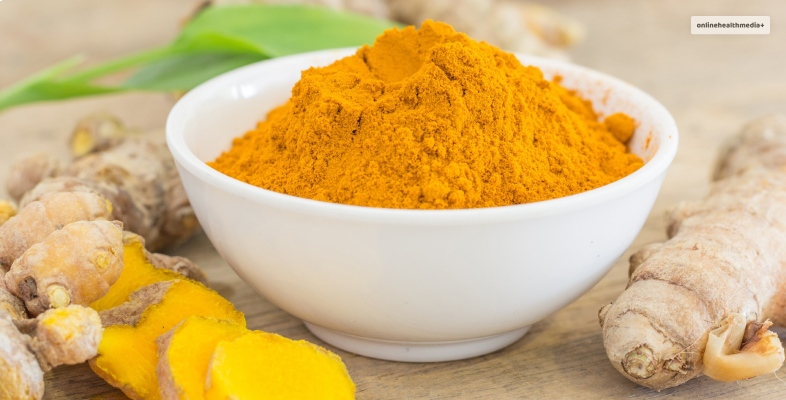
So far, we have seen that most of turmeric’s “anti-” properties are due to the active ingredient curcumin, the most potent ingredient with multiple benefits. One such benefit is its antimicrobial property. Starting with the antibacterial property of the chief bioactive substance, curcumin shows antibacterial properties as well.
The component works by preventing the development of the bacterial populace. This is achieved through the prevention of the replication process. Replication is simply the duplication process of preparing another copy of the bacterial (and other organisms’) genetic material.
The inhibition of this crucial step in bacterial growth is detrimental to the microorganism, thus, beneficial for humans!
6. Hepatoprotective
Hepato– refers to anything related to the liver. Thus, when turmeric is said to have hepatoprotective properties, it is implied that the plant has additional properties that protect our liver from severe damage. The bioactive component of the tuber protects our liver from acute and chronic injuries, cirrhosis, and non-alcoholic steatohepatitis, among other conditions.
The daily use of substances such as alcohol, drugs and exposure to pollutants, parasites, and poor dietary habits damage the liver cells. Thus, curcumin in turmeric helps reverse the damage for people who consume these substances or are exposed to such conditions.
7. Weight loss

This non-communicable disease has become one of the most prominent health concerns worldwide. Especially in our country, we are seen to have poor dietary habits that promote the accumulation of fat. The dwindling activity of a weighing machine’s pin is seen due to excess fat deposition.
Thus, by using turmeric in your daily life, you can benefit from its facilitation of weight loss. The management of weight is through regulating leptin levels, which promotes weight loss and controlling appetite.
Curcumin has anti-obesity properties that prevent the storage of excess fat. This promotes the loss of weight and a decrease in body mass index.
8. Men’s sexual health
a. Erectile dysfunction
The solid anti-inflammatory potential of curcumin aids in the treatment of erectile dysfunction. Specifically, erectile dysfunction that is related to inflammation. In addition, one of the 20 benefits of turmeric and ginger is seen as having positive effects on this issue—the anti-inflammatory activity of curcumin aids in treating this sexual dysfunction.
Even though this isn’t a medically-relevant treatment for this sexual dysfunction, it is a safer alternative to the prescribed medicines. These are known to have side effects. The antioxidant and anti-inflammatory properties of the bioactive component described initially are also responsible for preventing sexual dysfunction.
b. Levels of testosterone

The levels of testosterone in men have a significant effect on the overall health and well-being of men. Turmeric powder, when consumed in milk, helps men to increase the production of testosterone, which aids in the promotion of muscle mass.
This is also helpful for the sexual health of men. Specifically, the Leydig cells of the body aid in producing this hormone. If these cells are inflamed, the hormone cannot be made adequately. This leads to various issues, such as irregular sleep, erectile dysfunction, hypogonadism, and other abnormalities. However, be careful not to overuse the substance.
c. Sperm motility
Out of the various benefits provided to the sexual health of men, turmeric consumed in any of its forms protects from toxic substances such as nitrate pollutants, chromium, toxins, and oxidative stress. These compounds are known to cause severe damage to the quality of sperm due to the injury.
A study using animal models has shown beneficial effects on the viability and motility of sperm. Another study showed the combined beneficial effects of turmeric and ginger on the concentration of sperm. In patients with leukocytospermia and asthenoteratospermia, using turmeric improved the engagement, count, morphology, and motility of the sperms.
9. Women’s sexual health

a. Menstruation
The effect of curcumin has been shown to have a positive impact on menstruation characteristics, helping with amenorrhea, oligomenorrhea, and other irregularities. Especially in women with PCOS (Polycystic Ovary Syndrome), the component has resulted in decreased FBS (Fasting Blood Sugar) levels which aid in managing the complications associated with the condition.
b. Female libido
The issues related to sex drive and libido aren’t restricted to men. Women also face similar problems, with at least one in four experiencing poor libido. Turmeric has been shown to improve this through a gradual increase in dosage.
This superfood has been dubbed a libido enhancer for women, with reports claiming it to be an aphrodisiac. This benefit of turmeric can be reaped with one gram of turmeric in a cup of water or milk.
c. Folliculogenesis
Folliculogenesis is the development of follicles that allow the release of mature oocyte (basically, pre-eggs) and eventually turns into corpus luteum. This process is supported by the consumption of turmeric, which helps the growth of ovarian follicles. The consumption of turmeric alters the ovary’s response to gonadotropin and the release of its hormones.
10. Anti-diabetic
In the early ages, turmeric was used to rid the body of several diseases and conditions. One such disease that people rode through the use of turmeric was diabetes. With the current heightened prevalence of the disease worldwide, lowering its cases is imperative.
Using pharmacological methods has shown significant progress. However, there have been side effects recorded for the same. Non-pharmacological or home remedies allow diabetic individuals to control their condition without side effects.
11. Antidepressants

With the cases of mental illnesses increasing significantly, the healthcare sector’s focus has been on controlling this number. However, there has been little to no progress in finding a foolproof effective treatment.
The use of turmeric as an antidepressant can be approached for its antioxidant and anti-inflammatory properties, chiefly in improving health. These two properties of the active compound aid in affecting the dopamine and serotonin levels in the body. These control our behavior and mood.
Thus, the role of turmeric can be seen as a modulator of the parts of the brain that respond to stress.
12. Anti-aging
The effects of turmeric have been seen in increasing the skin’s glow by fighting free radicals. The active ingredient- curcumin- fights free radicals, which aids in slowing skin aging. The use of turmeric while cooking or consuming by mixing it in milk allows the antioxidants to be released. These plant components improve the skin’s elasticity and reduce dullness.
The production of collagen is boosted when turmeric is consumed, which aids in speeding up the formation of new, healthy skin. The enzyme elastase is inhibited by turmeric, which prevents the breakdown of elastin.
13. Eye degeneration

The anti-inflammatory effects of curcumin aid in the prevention of retinal disorders that are caused as an effect of oxidative stress. Oxidative stress causes the inflammatory process that leads to damage. This damage is, thus, prevented by the consumption of turmeric.
The improvement in eye health can be achieved through turmeric, as its various properties protect the eyes from damage. A study has shown that curcumin can prevent the degeneration of the capillary. The macular degeneration observed due to increasing age can be reversed by using turmeric in one’s diet.
The central vision is affected due to the degeneration, and this aggravates the eye degeneration. Thus, including turmeric in one’s diet allows one to control significant eye damage.
14. Antiviral agent
The antimicrobial properties of turmeric aid in protecting people from various microorganisms that can be pathogenic or infectious. Its active ingredient has been known to have antiviral properties as well. Curcumin in turmeric prevents the replication of viral bodies as well as limits the function of various enzymes.
These enzymes are required for the proper activity of the viral agent. Using turmeric daily protects against the viral agents usually found in nature. Thus, with turmeric, you can reduce the probability of contracting a simple cold and cough.
15. Mood improvement

Several researchers have recorded the effect of curcumin on the mood-processing regions of the brain. The role of turmeric as a mood enhancer can be accepted due to its anti-inflammatory and antioxidant properties. By now, you must have deduced that these properties are the MVP of turmeric- conferring several protective effects.
The inflammation of the brain can be prevented through the anti-inflammatory properties of turmeric, which inhibits the activity of monoamine oxidase. This enzyme aids in the degradation of dopamine, serotonin, and norepinephrine. All three components are necessary for the improvement of an individual’s mood.
16. Lowering anxiety
The use of turmeric in reducing anxiety has been recorded for a long time. Ancient Indian scriptures highlighted the use of turmeric in boosting dopamine and serotonin. In addition, using such an ingredient lowers the side effects experienced with medications such as Prozac.
The anti-inflammatory mechanism of turmeric aids in increasing the level of dopamine and serotonin, which can be beneficial in treating anxiety and other mental disorders. This increase in the ranks of serotonin allows the consumer to feel energetic and involved in the surrounding activities. Thus decreasing and getting in your home.
17. Relaxation

The use of turmeric in combatting the signs of exhaustion and restlessness has been well-known. The anti-inflammatory property of turmeric makes it a great tool in fighting oxidative damage. This is a potent promoter of turmoil which can be counteracted through the incorporation of turmeric into the diet.
Especially during bedtime, you can include this in your routine to see significant effects on the mood. One of the 20 benefits of turmeric milk is its role in enhancing mood and promoting relaxation, improving sleep quality.
18. Blood circulation
The improvement in the circulation of blood is another one of the many benefits of turmeric. It can decrease inflammation, reduce oxidative stress, and promote the production of nitric oxide, which aids in opening up the blood vessels. This, in turn, acts as a promoter of blood circulation.
The opening of the vessels promotes efficient blood flow through the circulatory system. The antioxidant property of curcumin also supports the quality of blood through hepatic circulation (blood circulation through the liver). In addition, the promotion of cerebral oxygenation is also linked to the advancement of blood flow to the brain.
19. Anti-cancer

By now, you must have guessed what features of turmeric act as an anti-cancer agent. The anti-inflammatory and antioxidant properties actively suppress the activity of NF-κB by inhibiting the IκKB- simply, it stops the latter from waking up the former, which is the chief driver behind the formation of tumors.
The active component has been noted to be effective in preventing the signaling pathway, which can support the modulation of cancer development and its progression. The promotion of cancer is stopped through the suppression of its proliferation. This is achieved through the abovementioned mechanism.
20. Painkiller
Most prominently, Asian countries such as India and Pakistan have embraced turmeric as a painkiller. This natural painkiller has helped reduce pain in joints, muscles, and injured areas. The anti-inflammatory property of curcumin has been effective in reducing pain related to major inflammatory issues.
So, if you are experiencing inflammatory conditions such as osteoporosis and arthritis, try drinking turmeric milk with a bit of jaggery (sugar will also be refined) for added benefit.
Side Effects Of Turmeric
Turmeric, a commonly used spice and herbal remedy, is generally considered safe when consumed in moderate amounts as part of a balanced diet.
However, like many natural substances, turmeric can have side effects in certain situations, particularly when consumed in excessive quantities or when used in concentrated supplement form.
Here are some of the potential side effects of turmeric:
1. Gastrointestinal Distress: One of the most common side effects of turmeric is gastrointestinal discomfort. Excessive consumption can lead to symptoms like nausea, diarrhea, and stomach upset. This is more likely to occur when consuming high doses or concentrated forms of turmeric.
2. Increased Risk of Kidney Stones: Turmeric contains oxalates, which are compounds that can contribute to the formation of kidney stones, particularly in individuals prone to this condition. If you have a history of kidney stones, it’s advisable to limit your turmeric intake.
3. Bleeding and Clotting Issues: Turmeric has mild anticoagulant properties, meaning it can inhibit blood clotting. While this can be beneficial for those at risk of blood clots, it can be a concern for individuals on blood-thinning medications or those with bleeding disorders. It’s essential to consult a healthcare professional if you’re in either of these groups.
4. Digestive Issues: Some people may be sensitive to turmeric’s spiciness, which can lead to symptoms of heartburn and indigestion. If you experience these symptoms after consuming turmeric, it’s best to reduce your intake or avoid it.
5. Allergic Reactions: Although rare, some individuals may be allergic to turmeric. Allergic reactions can manifest as hives, itching, or swelling. If you suspect an allergy, discontinue use and seek medical attention.
6. Iron Absorption: Curcumin, the active compound in turmeric, may hinder the absorption of non-heme iron (the type of iron found in plant-based foods). This can potentially impact individuals with iron-deficiency anemia.
It’s important to note that the majority of these side effects are associated with high doses of turmeric or with the use of concentrated curcumin supplements, rather than the moderate culinary use of turmeric.
For most people, using turmeric in cooking is a safe and flavorful way to enjoy its potential health benefits.
If you are considering turmeric supplements or have any underlying medical conditions, it’s advisable to consult with a healthcare professional before use to ensure that it is safe and appropriate for your specific health needs.
Conclusion:
Thus, we have seen the various benefits of using turmeric daily. The most important benefits of this superfood were highlighted in this article, with the top 20 benefits of turmeric powder or its root form. If you have 99 problems, at least 20 could be solved using turmeric.
Watch out for the next article describing the top benefits of another food item whose superpowers were unknown to you!
Read also:
- Top Super foods for Diabetics
- 10 Proven Health Benefits of Turmeric and Curcumin
- 9 Reasons Why Superfoods Must Be Included In Your Diet
- Omega XL Review: How Can Omega XL Help You? Know In 2023
